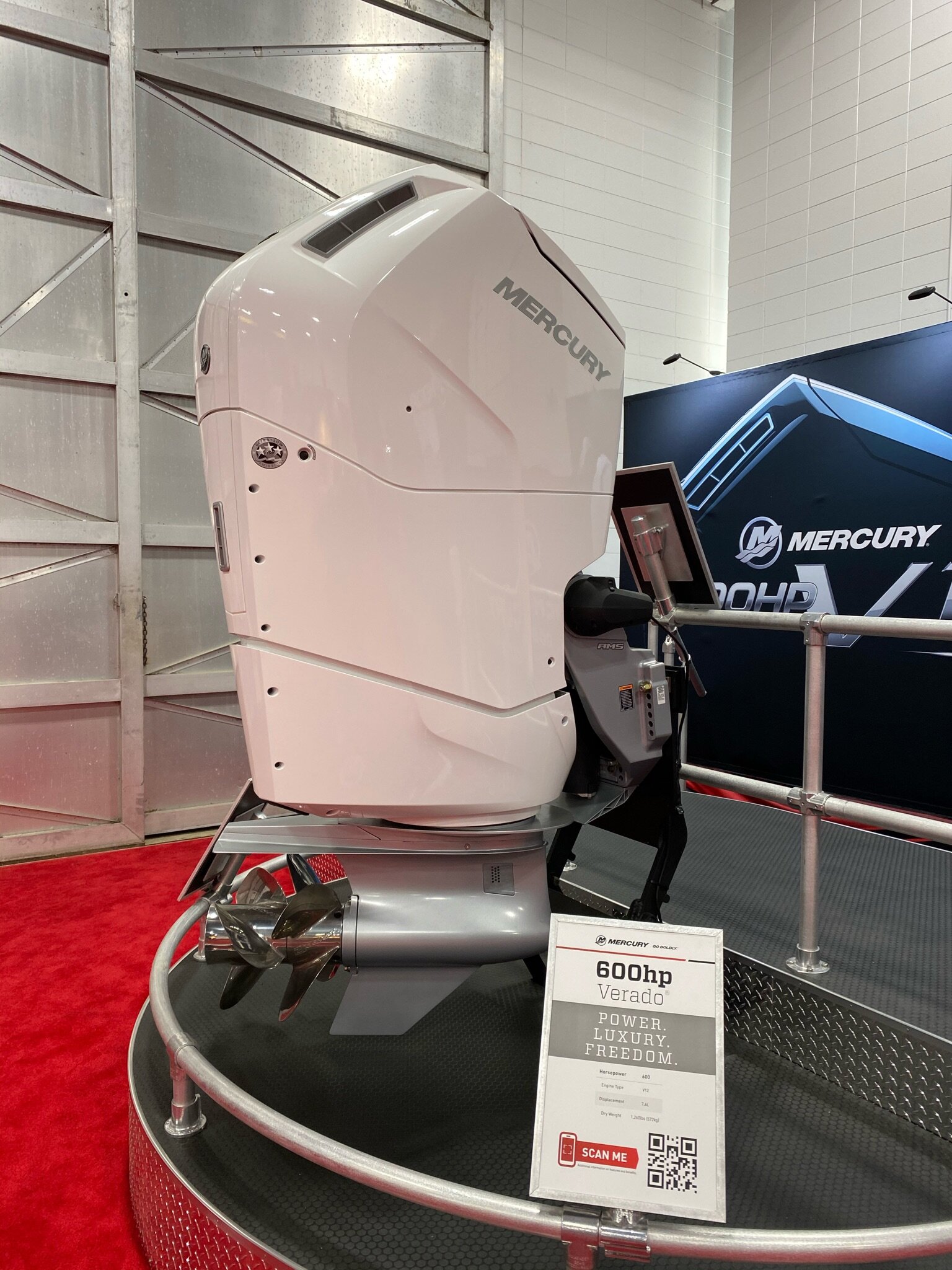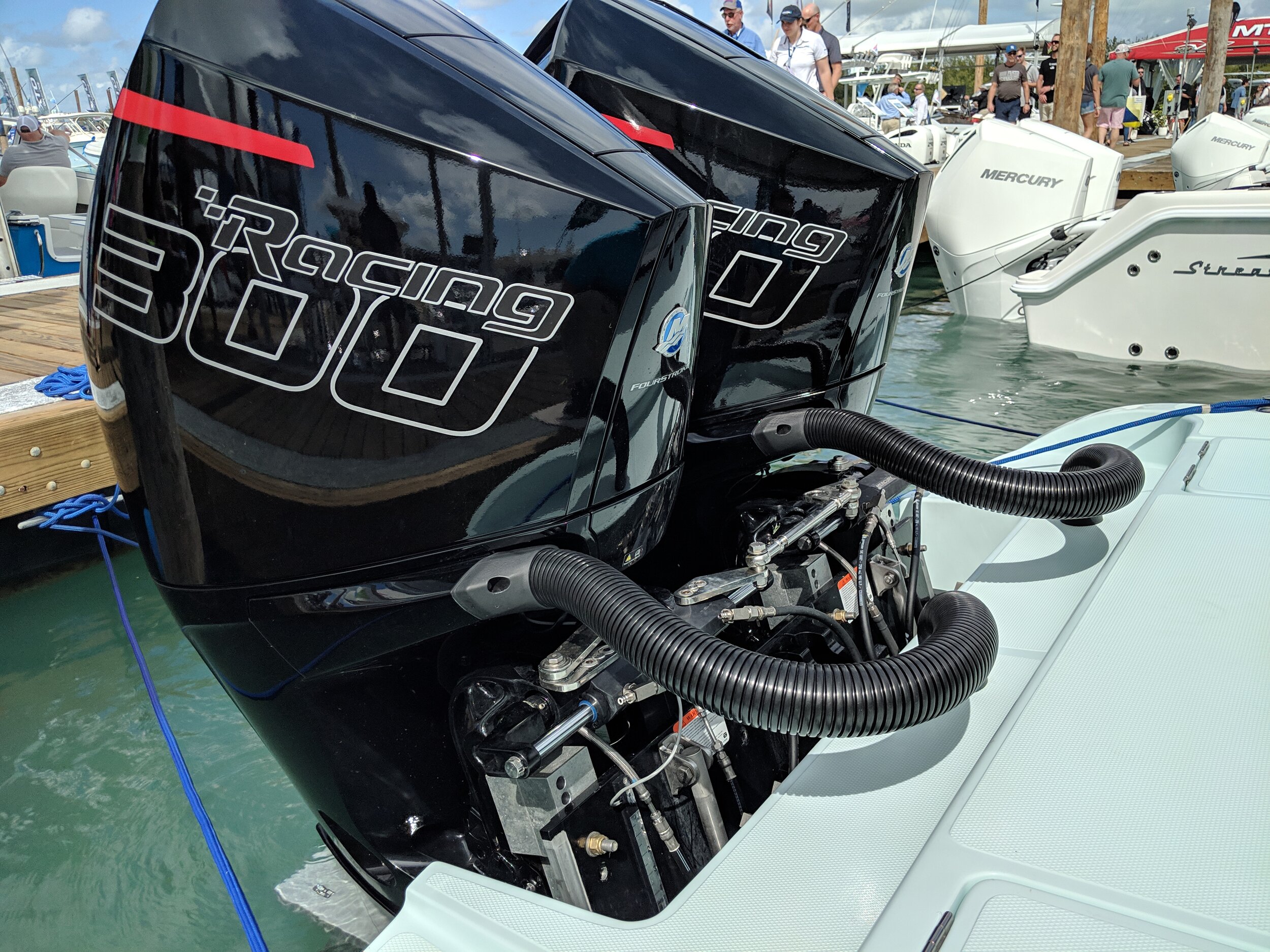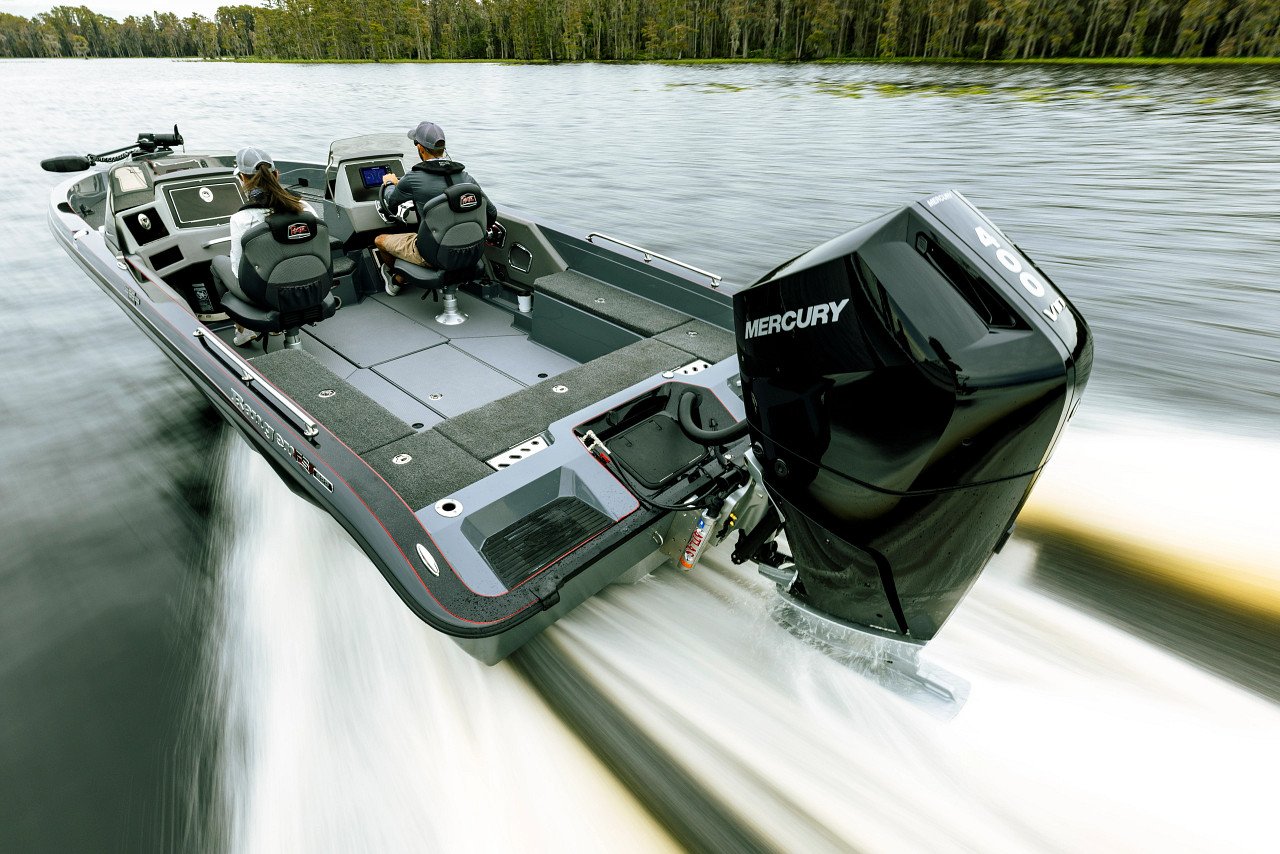Mercury Marine Verado V12 600 HP: An Outboard Revolution of Technology and Features
After much anticipation the impressive Mercury Marine 600 HP V12 Verado is here. I rarely cover the news and technically it’s not a performance engine but it is exciting and interesting enough to talk about. Everyone knows the highlights, a new 7.6 L V12 with 600 HP, featuring a 2 speed transmission. This is an all new platform with some truly industry changing features. Let’s look at what sets the new big Mercury V12 apart from anything else.
(The photos in the article are from Mercury Marine, and Jeff Rohlfing from Everything Boston Whaler. Everything Boston Whaler is the definitive source for Whaler enthusiasts and an incredible resource for boating in general.)
The most interesting innovation on the new V12 is the steering. It was only a matter of time before Mercury Marine incorporated a true integrated steering solution. Evinrude was first with the G2 steering built into the swivel bracket, and Yamaha has done a great job with a complete electric system, implementing a third party technology. Mercury has had hydraulic steering built-in to the Verado for a long time but this new steering is totally different. The V12 Verado has a lower unit that swivels like a pod, controlled by electronically assisted hydraulics, where the powerhead and midsection remain stationary. This innovation rethinks the functionality of a large outboard.
The steering is truly a killer innovation from Mercury Marine. This is the type of fresh thinking that makes or breaks new products and this looks like a game changer. There are multiple advantages to this steering. (Photo: Jeff Rohlfing, Everything Boston Whaler)
There are several advantages of this new steering design. One key advantage of the stationary position of the powerhead is that the range of directional turn is greater, from about 30 degrees on a traditional swivel bracket, to 45 degrees on the new design. Second, steering torque is lessened by not having to move a massive object, you get less moving parts under load, a more solid bracket, no external steering apparatus; which means much simpler rigging and cleaner design. I love this and is truly a new way to think about steering in outboards.
This idea of completely integrated steering is the future and will trickle down. For smaller engines it may not be pod style stationary powerhead like this design but steering is sort of a weak link in outboard design; this is a big step. Another aspect of the stationary powerhead is that it is critical for NVH (noise vibration and harshness). The engine simply can be secured more rigidly, and movement is lessened substantially. Shock absorption, vibration absorption becomes much less of a problem, especially given the weight of the engine. Another advantage is there will be no steering slop like in almost every other system. The contra rotating propellers are nothing new but a great way to increase thrust and control.
(photo: Jeff Rohlfing, Everything Boston Whaler)
External steering where the engine is moving, the mounts are also moving, and any play in the steering all translates back to the driver in the form of sloppiness that contributes to poor handling. The new Verado V12 should have effortless, precise steering at all speeds. Around the dock, again, the advantages are great with the range of direction and precision. Mercury wanted to make an outboard for the “luxury” segment and I think they nailed it with these key differentiating features.
Other notable features are the low maintenance, sleek design and the quiet smooth operation a V12 engine has. There is a reason why the most premier luxury cars use V12s. With the Mercury V12, the transmission, contra rotating props and gearing mean incredible fuel efficiency as well.
From Mercury Marine, the access panel is part of Mercury’s ease of maintenance design on all their outboards.
This engine is phenomenal for the luxury cruiser and luxury center console market. With that much power and more importantly the torque on tap, the V12 Verado can do the work of 2 or 3 other outboards. With the torque of the engine, along with the gear reduction the transmission offers, means a twin setup will outperform four 300 HP outboards or three 400 HP outboards, less drag is always better. This outboard is driven by demand and an improvement from the obvious comical application of 5 or 6 outboards on some boats that not only looks horrendous but is an exercise in inefficiency.
For a 600 HP V12 and a two speed transmission, this new outboard is relatively compact.
Key highlights: Electro-hydraulic steerable gearcase, 27 inch mounting on centers (center to center spacing), quad cam V12 with range optimization, automatic 2 speed transmission, access panel for general maintenance and contra-rotating props. 2.50:1 gear ratio, 1260 Lbs (lightest dry weight), midsection options: 20”, 25”, 30” and 35”. 5600 to 6400 RPM range. A 500 HP Sea Pro version is also available.
Personally, I don’t feel a Racing version of the Verado V12 is that great of an idea but that may be proven wrong. The power to weight of the 450R is phenomenal and really fits performance boats much better. And twin 300R engines is attractive for weight, cost, power and gearcase options. That said, maybe 650 HP versions with performance gearcases would work on a new generation of large sport boats? I don’t see that market right now and Mercury Racing sterndrives are great options there. On a large luxury boat, the 600 HP Verado V12 is peerless. Every luxury cruiser and luxury center console manufacturer is planning on having the Mercury V12 on the back, the engine will change boat design in the luxury category.
The design is simple with a slightly aggressive rake. Overall, the new V12 Verado is perfect for the luxury market in how it looks. (Photo credits to Jeff Rohlfing from Everything Boston Whaler)
Outboard Sales Numbers
Here are some interesting outboard stats from 2020. Outboard sales set records last year and almost every category had large gains, according to the National Marine Manufacturers Association. The largest HP range in sales is 150 to 200 HP, representing just over 15% of the total market, which is about 330,000 total units. 100 to 150 HP is the second largest, so if you combine 100 to 200 HP as a category it represents a massive chunk of the market; over 30%. Boat and outboard sales in general have been on an upward trajectory for about 10 years now.
Fairly predictably, Florida and Texas lead the way in sales. Sales of 300 HP and up outboards also grew to become almost 10% of the market in sales. Mercury Marine and Yamaha are the only manufacturers making 400 HP and up outboards, with Mercury offering the Verado 400, Racing 400R, Racing 450R and now the Verado V12 600 HP. Yamaha has the 425 XTO.












